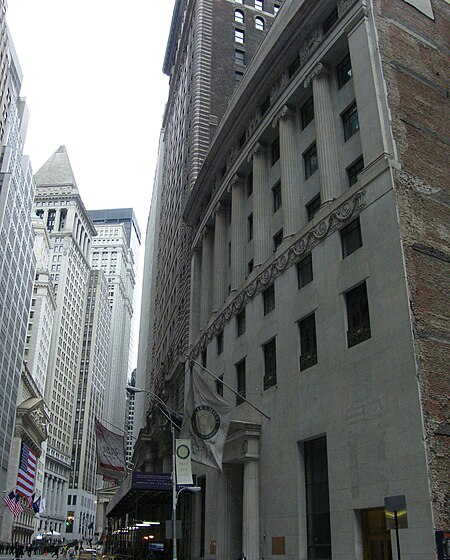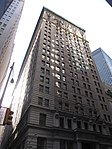Lee, Higginson & Company Bank Building
1928 establishments in New York CityBank buildings on the National Register of Historic Places in New York CityBroad Street (Manhattan)Commercial buildings completed in 1929Commercial buildings on the National Register of Historic Places in Manhattan ... and 8 more
Financial District, ManhattanHistoric district contributing properties in ManhattanIndividually listed contributing properties to historic districts on the National RegisterIndividually listed contributing properties to historic districts on the National Register in New York (state)Manhattan Registered Historic Place stubsManhattan building and structure stubsNeoclassical architecture in New York CityOffice buildings in Manhattan

The Lee, Higginson & Company Bank Building is a historic bank building located at 41 Broad Street in the Financial District of Lower Manhattan, New York City. The structure was designed by architects Cross & Cross and built in 1928–1929. It is a 10-story, Classical Revival style, with a top floor penthouse. It features a slightly curved front facade, architectural sculpture by Leo Friedlander, and murals by Griffith B. Coale.: 3 It was added to the National Register of Historic Places on June 7, 2006. In 2007, it was designated as a contributing property to the Wall Street Historic District, a NRHP district.
Excerpt from the Wikipedia article Lee, Higginson & Company Bank Building (License: CC BY-SA 3.0, Authors, Images).Lee, Higginson & Company Bank Building
Broad Street, New York Manhattan
Geographical coordinates (GPS) Address External links Nearby Places Show on map
Geographical coordinates (GPS)
| Latitude | Longitude |
|---|---|
| N 40.705555555556 ° | E -74.011388888889 ° |
Address
Broad Street 41
10004 New York, Manhattan
New York, United States
Open on Google Maps







